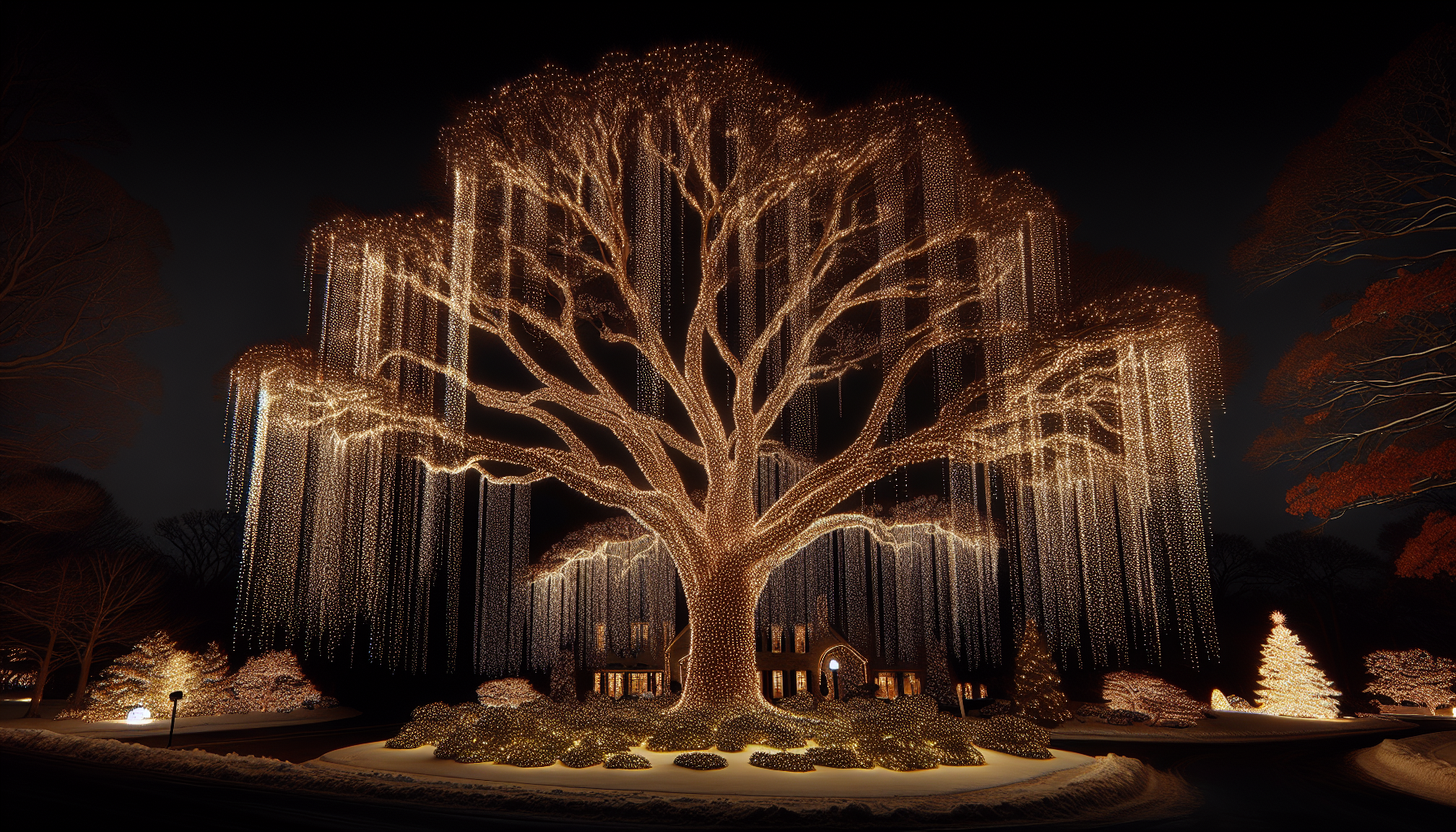Table of Contents
- Mastering the Art of Tree Lighting
- Choosing the Right Tree
- Mastering the Cascading Technique
- Optimizing Power Distribution
- Embracing Imperfections
- Maintenance and Troubleshooting
- FAQ
Mastering the Art of Tree Lighting
Transforming your outdoor spaces into a dazzling winter wonderland is a cherished tradition for many. One of the most captivating elements of holiday lighting is the cascading effect achieved by carefully draping lights through the branches of trees. While this technique may appear effortless, it requires a strategic approach to ensure a professional-grade result. In this comprehensive guide, we’ll explore the nuances of tree lighting and share expert tips to help you create a mesmerizing display that will leave your guests in awe.
Choosing the Right Tree
The foundation of a stunning tree lighting display lies in the selection of the right tree. Not all trees are created equal when it comes to this technique. Look for trees with a well-defined architectural structure, free from an abundance of small, cluttered branches. This open, airy design will allow you to weave the lights seamlessly through the branches, creating a cohesive and visually appealing display.
Another important consideration is the tree’s shape and symmetry. Opt for trees with a balanced, uniform silhouette, as this will ensure a harmonious lighting arrangement. Avoid trees with significant gaps or lopsided growth, as these imperfections can be highlighted and accentuated by the lighting design.
Mastering the Cascading Technique
The key to a successful cascading tree lighting display lies in the strategic placement and spacing of the lights. Begin by wrapping the trunk of the tree, creating a solid foundation for the cascading effect. As you move up the branches, alternate between wrapping the branch and allowing the lights to cascade down, creating a natural, flowing appearance.
Ensure that the bottom of the cascading lights are all roughly the same height, approximately 1-2 feet off the ground. This consistency will create a visually appealing and cohesive look, regardless of the varying heights of the branches. Adjust the spacing and length of the cascading sections as needed to achieve the desired effect.

Optimizing Power Distribution
Proper power distribution is essential to maintaining the integrity of your tree lighting display. Avoid the common mistake of powering all the branches from a single line starting at the bottom. Instead, strategically place power sources throughout the tree, using jumper cords to distribute the electricity evenly.
This approach serves two important purposes: it prevents a single point of failure and ensures that if one section experiences an issue, the rest of the tree remains unaffected. Additionally, it allows you to better manage the power load, preventing overloading and potential safety hazards.
Embracing Imperfections
One of the hallmarks of a professional-grade tree lighting display is the ability to work with the natural imperfections of the tree. Rather than trying to conceal or overcome these unique characteristics, embrace them and incorporate them into your design.
For example, if a tree has a one-sided growth pattern, consider a lighting design that accentuates this feature, such as a more concentrated cascading effect on the fuller side. By aligning your lighting choices with the tree’s natural form, you create a harmonious and visually captivating display that showcases the tree’s inherent beauty.
Maintenance and Troubleshooting
Maintaining the longevity and reliability of your tree lighting display is crucial. Regularly inspect the lights, connections, and power sources to ensure everything is functioning properly. Address any issues promptly, such as blown fuses or damaged wiring, to prevent larger problems from arising.
Additionally, be prepared for unexpected challenges, such as squirrel damage or inclement weather. By implementing a modular power distribution system, you can quickly isolate and address any localized issues, minimizing the impact on the overall display.
FAQ
What type of lights should I use for a cascading tree display?
For professional-grade results, it’s recommended to use commercial-grade Christmas lights designed for outdoor use. These lights are more durable, weatherproof, and offer a brighter, more consistent illumination compared to standard household lights.
How do I determine the appropriate spacing for the cascading lights?
The optimal spacing for the cascading lights will depend on the size and shape of the tree. As a general guideline, aim for a spacing of approximately 6-12 inches between the cascading sections, adjusting as needed to create a visually balanced and cohesive display.
How can I ensure the lighting display is energy-efficient?
To maximize energy efficiency, consider using LED lights, which consume significantly less power than traditional incandescent bulbs. Additionally, implement a modular power distribution system to minimize energy waste and prevent unnecessary power draw from unused sections.
What safety precautions should I take when installing tree lighting?
Safety should always be the top priority when working with outdoor lighting displays. Ensure that all electrical connections are properly grounded and weatherproofed, and avoid overloading power sources. Additionally, use caution when working at heights and consider hiring a professional if you are not comfortable with the installation process.
How can I extend the lifespan of my tree lighting display?
Proper storage and maintenance are key to extending the lifespan of your tree lighting display. Carefully remove and store the lights in a dry, protected environment when not in use. Regularly inspect for any damage or wear and tear, and make necessary repairs or replacements to ensure the display remains in top condition for years to come.
By following these expert tips and embracing the unique characteristics of your trees, you can create a captivating and professional-grade holiday lighting display that will be the envy of your neighborhood. Elevate your outdoor spaces and fill them with the magic of the season, one cascading tree at a time.
